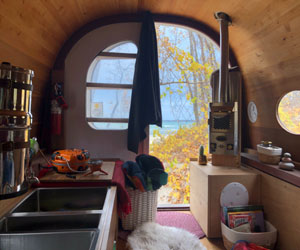


Shaping A Sustainable Future
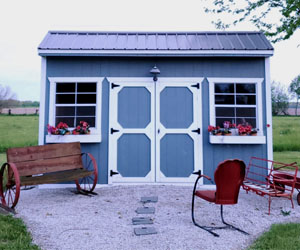
Eco-friendly design, also known as green design or sustainable design, is an innovative approach that combines aesthetics, functionality, and environmental responsibility. It focuses on creating products, buildings, and spaces that reduce their environmental impact while improving the quality of life for their users. This design philosophy is a response to the urgent need to address climate change and reduce the strain on Earth's finite resources.
Key principles of eco-friendly design include:
Resource Efficiency: Eco-friendly design aims to minimize waste by using materials efficiently. This includes selecting sustainable, recyclable, and renewable materials and designing products and spaces with minimal environmental impact.
Energy Efficiency: Energy-efficient design is a central aspect of eco-friendly design. This involves creating structures and products that require less energy to operate, thus reducing greenhouse gas emissions and energy costs.
Sustainable Materials: The use of eco-friendly materials, such as reclaimed wood, recycled metals, and low-VOC (volatile organic compounds) paints, is a cornerstone of eco-friendly design. These materials have lower environmental impacts and contribute to healthier indoor air quality.
Waste Reduction: Eco-friendly design encourages the reduction of waste at all stages, from manufacturing and construction to product use and disposal. This can include designing for disassembly and recycling.
Biomimicry: Biomimicry is a concept in eco-friendly design where designers draw inspiration from nature's solutions to complex problems. By imitating nature's strategies, designers can create more sustainable and efficient products and buildings.
Energy-Efficient Appliances and Systems: In architecture and interior design, eco-friendly design often incorporates energy-efficient appliances, lighting, and heating, ventilation, and air conditioning (HVAC) systems.
Water Efficiency: Eco-friendly design includes water-saving features such as low-flow faucets, dual-flush toilets, and rainwater harvesting systems. These measures reduce water consumption and promote water conservation.
Adaptive Reuse: In architecture and interior design, adaptive reuse is a strategy that involves repurposing existing buildings or structures rather than demolishing and building anew. This reduces waste and preserves historical and cultural significance.
Renewable Energy: Many eco-friendly designs incorporate renewable energy sources such as solar panels and wind turbines to reduce reliance on fossil fuels.
Biophilic Design: Biophilic design integrates nature into the built environment, incorporating natural elements like plants, water features, and natural light to improve well-being and connect occupants with nature.
Eco-friendly design is not limited to architecture and interior design; it extends to various products, from clothing and transportation to consumer electronics and packaging. Sustainable products are designed to last longer, be easily repaired, and have a smaller environmental footprint throughout their lifecycle.
Eco-friendly design is a creative and forward-thinking approach that addresses the environmental challenges of our time. It emphasizes resource efficiency, energy conservation, waste reduction, and the use of sustainable materials. Eco-friendly design is not only responsible but also practical, as it often results in cost savings and improved well-being for users. As the global awareness of environmental issues continues to grow, eco-friendly design will play a pivotal role in shaping a more sustainable and responsible future for our planet. By prioritizing eco-friendly design, we can take a significant step toward mitigating the impact of human activities on the environment and creating a more harmonious coexistence with the natural world.
Powering Your Home Sustainably
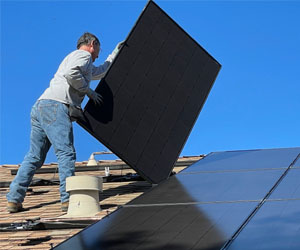 The Rise Of Solar Power
The Rise Of Solar Power
Solar power has become a mainstream energy source, and its use in residential settings is on the rise. Homeowners are increasingly turning to solar panels to generate their electricity, and it's not difficult to understand why. Solar power offers an array of advantages, making it an attractive choice for environmentally conscious individuals.
Eco-Friendly Energy
One of the primary benefits of residential solar solutions is their eco-friendliness. Solar panels harness the energy of the sun, a renewable resource, and convert it into electricity. Unlike traditional fossil fuels, solar power does not produce harmful emissions, making it a clean and green energy source. By switching to solar energy, homeowners significantly reduce their carbon footprint and contribute to a healthier planet.
Lower Energy Bills
Solar panels not only benefit the environment but also your wallet. Once you've invested in a solar panel system for your home, you'll enjoy reduced energy bills. Solar power systems can generate a substantial portion of your electricity needs, which means you'll buy less power from the grid.




Opportunities And Challenges For A Changing World
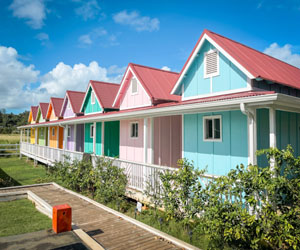 The world's population has been steadily increasing for centuries, driven by a combination of factors, including increased life expectancy, reduced mortality rates, and, in some regions, high fertility rates. While the global population growth rate has been slowing down, it remains a significant concern due to its implications on resources, infrastructure, and quality of life.
The world's population has been steadily increasing for centuries, driven by a combination of factors, including increased life expectancy, reduced mortality rates, and, in some regions, high fertility rates. While the global population growth rate has been slowing down, it remains a significant concern due to its implications on resources, infrastructure, and quality of life.
One of the challenges associated with rapid population growth is the strain it places on resources. As the number of people on the planet increases, so does the demand for essentials like food, water, energy, and housing. This growing demand can lead to resource scarcity, environmental degradation, and increased competition for limited resources.
Moreover, population growth often has economic implications. While a growing population can contribute to a larger labor force, which can be a source of economic growth, it can also lead to unemployment and underemployment if job opportunities do not keep pace with the increase in the labor force. Balancing economic growth with the needs of a growing population is a delicate challenge for governments and policymakers.
Urbanization is closely linked to population growth. As more people move to cities in search of better opportunities, urban areas experience increased pressure on housing, transportation, and social services. Rapid and unplanned urbanization can lead to inadequate infrastructure, housing shortages, and increased pollution, posing health and environmental risks.
The Advantages Of Raised Beds
 One of the primary benefits of raised beds is their superior drainage and soil aeration. Because the soil is elevated, excess water drains more efficiently, preventing waterlogged soil and root rot. This feature is especially valuable in regions with heavy rainfall or poor soil drainage. Additionally, the loose soil in raised beds allows for better aeration, promoting healthy root development.
One of the primary benefits of raised beds is their superior drainage and soil aeration. Because the soil is elevated, excess water drains more efficiently, preventing waterlogged soil and root rot. This feature is especially valuable in regions with heavy rainfall or poor soil drainage. Additionally, the loose soil in raised beds allows for better aeration, promoting healthy root development.
Improved Soil Quality
Gardeners have control over the composition of the soil in raised beds. You can customize the soil mix to meet the specific needs of your plants. This flexibility is especially advantageous if your natural soil is of poor quality. Gardeners often use a blend of topsoil, compost, and organic matter to create a rich, fertile growing medium in their raised beds.
Warmer Soil And Extended Growing Season
Raised beds are known for their ability to warm up earlier in the spring and stay warmer in the fall, effectively extending the growing season. The elevated structure allows the soil to absorb and retain heat more efficiently. This feature enables gardeners to start planting earlier and continue harvesting crops later into the year.
Ease Of Maintenance
Working in raised beds is generally more comfortable due to the raised height, which reduces the need for bending and kneeling. This is particularly beneficial for individuals with mobility issues or back problems.



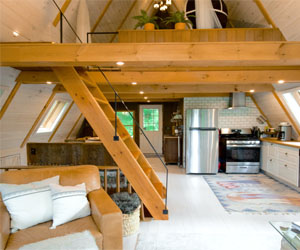
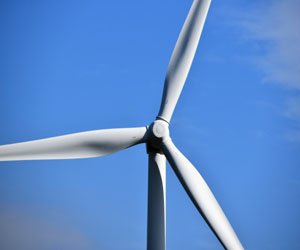
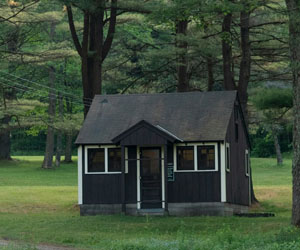
Cultivating A Passion For Gardening
 Defining The Green Thumb
Defining The Green Thumb
A "green thumb" is a colloquial term that signifies a person's natural aptitude and success in gardening. Those with green thumbs seem to effortlessly grow thriving plants, lush gardens, and abundant crops. They have a knack for understanding the needs of plants, diagnosing issues, and nurturing them to flourish. Many people believe that this ability is an inborn talent, but the reality is more nuanced.
The Science Of Green Thumbs
While some individuals may have a more intuitive understanding of plants due to their upbringing or exposure to gardening from a young age, the concept of the green thumb is not solely based on genetics. Instead, it is rooted in knowledge, experience, and a deep appreciation for the natural world.
Education: Green thumbs often have a solid understanding of horticulture, botany, and gardening techniques. This knowledge allows them to make informed decisions about planting, soil preparation, and care.
Observation: Successful gardeners pay close attention to their plants. They observe growth patterns, spot issues early, and take corrective action, ensuring that plants receive the right care.
Protecting Our Planet Through Sustainable Practices
 Environmental benefits are critical for several reasons:
Environmental benefits are critical for several reasons:
Ecosystem Health: By reducing pollution, habitat destruction, and resource depletion, environmental benefits help maintain the health and diversity of ecosystems.
Climate Change Mitigation: Sustainable practices that reduce greenhouse gas emissions and promote carbon sequestration are essential for combating climate change.
Resource Conservation: Environmental benefits help protect and conserve vital resources like water, soil, and biodiversity.
Human Health: A cleaner environment means better air and water quality, which directly affects human health.
Strategies For Achieving Environmental Benefits
Numerous strategies and practices contribute to environmental benefits:
Renewable Energy: Transitioning to renewable energy sources like solar, wind, and hydropower reduces greenhouse gas emissions and lessens the environmental impact of energy production.
Waste Reduction: Reducing, reusing, and recycling materials minimizes waste and lowers the environmental footprint of resource extraction and disposal.
Sustainable Agriculture: Practices like organic farming, crop rotation, and agroforestry help maintain soil health, reduce chemical use, and preserve biodiversity.
Green Building Design: Energy-efficient and sustainable building designs can lower energy consumption and minimize the use of natural resources.
Conservation And Restoration: Protecting and restoring natural habitats can preserve biodiversity, improve water quality, and sequester carbon.